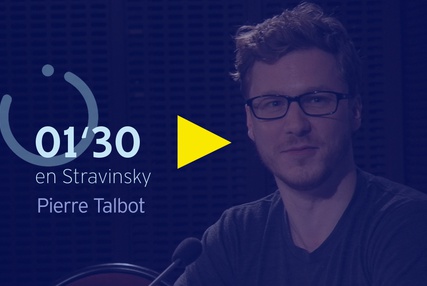Représentations musicales
Ces travaux mènent à des applications dans les domaines de la composi- tion assistée par ordinateur (CAO), de la performance, de l’improvisation, de l’interprétation et de la musicologie computationnelle. La réflexion sur les représentations de haut niveau des concepts et des structures musicales, appuyée sur les langages informatiques originaux développés par l’équipe, débouche sur l’implantation de modèles qui peuvent se tourner vers l’analyse musicale comme vers la création, vers la composition comme la performance et l’improvisation.
Sur le versant musicologique, les outils de représentation et de modélisation permettent une approche véritablement expérimentale qui dynamise de manière significative cette discipline.
Sur le versant création, l’objectif est de concevoir des compagnons musicaux qui interagissent avec les compositeurs, musiciens, ingénieurs du son… dans toutes les phases du workflow musical. Les logiciels développés ont pu être diffusés vers une communauté importante de musiciens, concrétisant des formes de pensée originales liées à cette caractéristique particulière des supports informatiques qu’ils peuvent représenter (et exécuter) à la fois la partition finale, ses divers niveaux d’élaboration formelle, ses générateurs algorithmiques, ses réalisations sonores et qu'ils permettent d'interagir dans le vif de la performance et notamment de l'improvisation.
L’équipe intègre l’interaction symbolique et la créativité artificielle à travers ses travaux sur la modélisation de l’improvisation et l’intégration de nouvelles formes compositionnelles ouvertes et dynamiques. Ces recherches permettent des avancées en intelligence artificielle, avec des modèles d’écoute, d’apprentissage génératif, de synchronisation, et posent les fondements de nouvelles technologies d’agents créatifs qui peuvent devenir des compagnons musicaux dotés de musicalité artificielle (« machine musicianship »). Cela préfigure la dynamique de coopération inhérente aux réseaux cyber-humains et l’émergence de formes de co-créativité homme-machine.
L’équipe a une longue histoire de collaboration intensive avec des compositeurs et musiciens, qu’ils soient internes ou externes à l’Ircam. Les trois tomes de l’ouvrage OM Composer’s Book archivent ces travaux et garantissent leur diffusion internationale et leur pérennité.
Principales thématiques
- Composition assistée : Composition assistée par ordinateur, logiciel OpenMusic ; Antescofo
- Orchestration : Orchestration assistée par ordinateur ; projet ACTOR ; logiciel Orchid*
- Contrôle de la synthèse et de la spatialisation, écriture du temps :
- Mathématique et musique
- Langages informatiques pour la création : logiciels OpenMusic ; Antescofo
- Dynamiques de l’interaction improvisée, co-créativité : projets DYCI2 ; MERCI ; REACH ; Logiciel Somax2
- Intelligence Artificielle Créative : projet ACIDS
- Études sur les structures musicales dans la performance : projet COSMOS
- Études en lien avec la thérapeutique : projet HEART.FM
Domaine de compétence
{Composition, analyse, performance, improvisation, orchestration} assistés par ordinateur, musicologie computationnelle, intelligence artificielle créative, langages informatiques musicaux, mathématiques musicales, langages temps réel synchrones, notations exécutables, architectures d’interaction, (co-)créativité computationnelle.
 Premier collage de l'identité du logiciel OpenMusic par A. Mohsen © Philippe Barbosa
Premier collage de l'identité du logiciel OpenMusic par A. Mohsen © Philippe Barbosa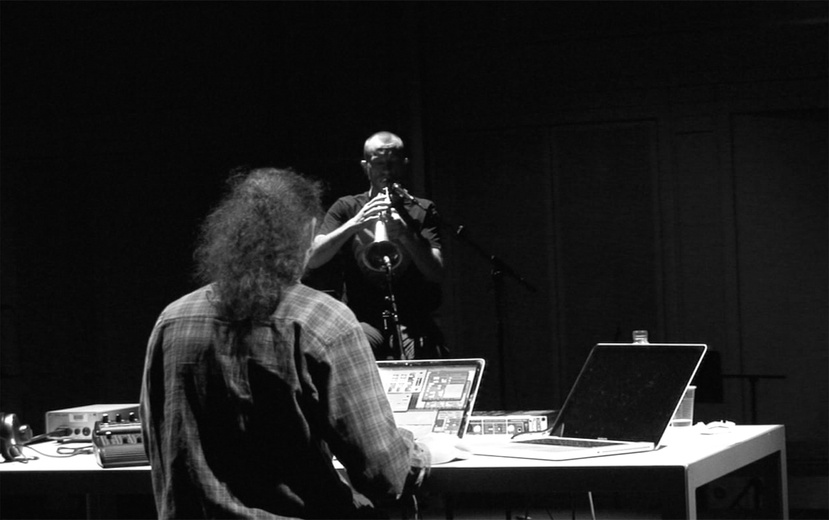 Mederic Collignon improvise en concert avec le logiciel OMax (RIM B. Lévy)
Mederic Collignon improvise en concert avec le logiciel OMax (RIM B. Lévy)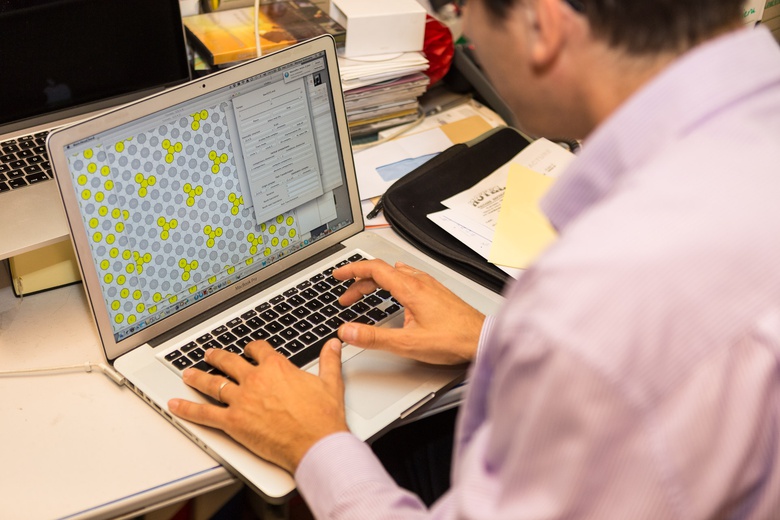 Moreno Andreatta, chercheur CNRS-Ircam dans son bureau © Philippe Barbosa
Moreno Andreatta, chercheur CNRS-Ircam dans son bureau © Philippe Barbosa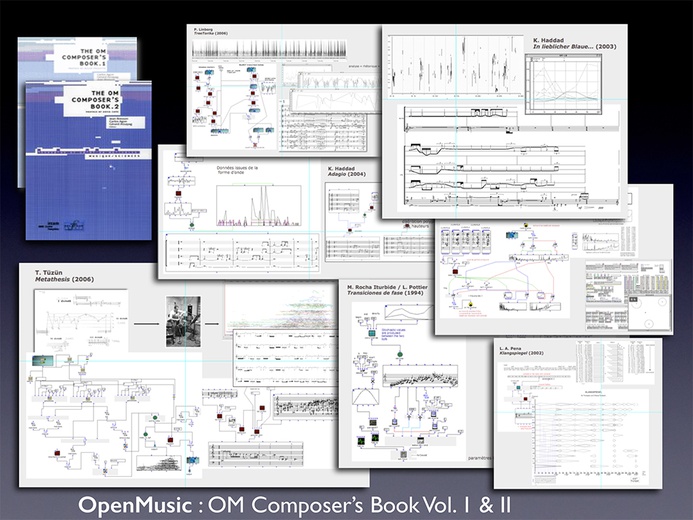 OM Composer's Book
OM Composer's Book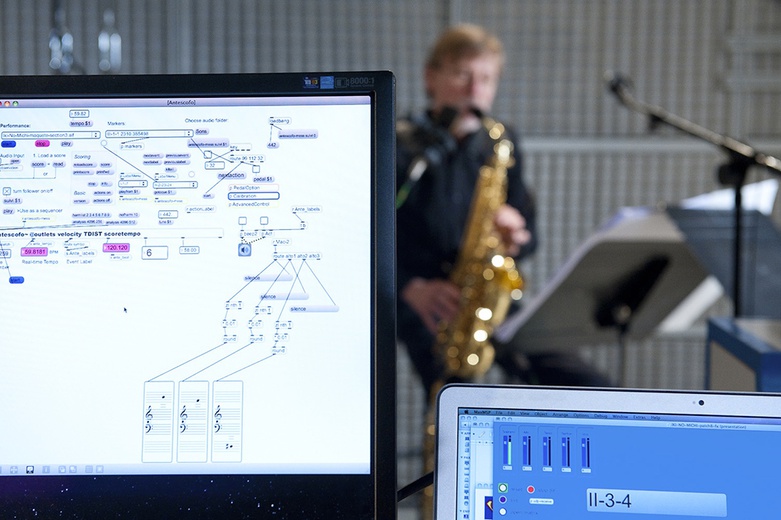 Claude Delangle en studio avec le logiciel Antescofo © Inria / H. Raguet
Claude Delangle en studio avec le logiciel Antescofo © Inria / H. Raguet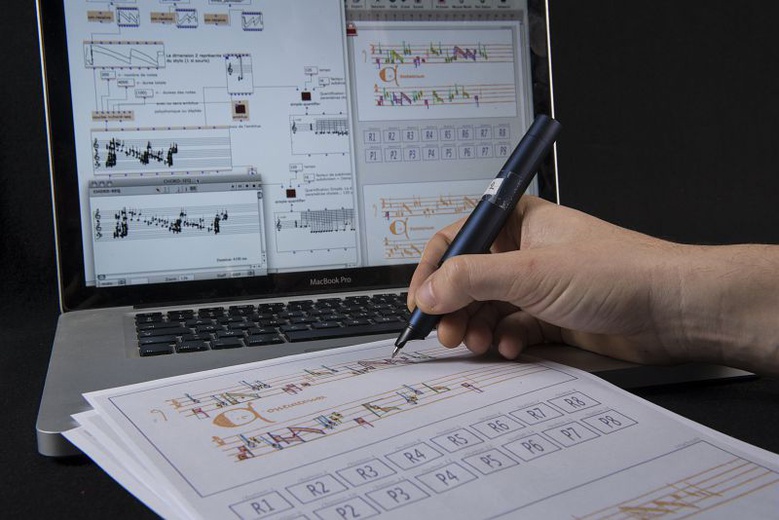 Papier Intelligent, écriture de l’espace dans la composition © Inria
Papier Intelligent, écriture de l’espace dans la composition © Inria
Domaines de compétence
Composition et analyse assistées par ordinateur, musicologie computationnelle, musicologie cognitive, intelligence artificielle, langages informatiques, apprentissage automatique, méthodes algébriques et géométriques, interactions symboliques, langage temps réel synchrone et temporisé, notations exécutables.
Domaines de recherche et projets associés
Composition assistée par ordinateur : écriture du son, du temps et de l'espace
Concevoir des modèles informatiques adaptés aux processus de création, intégrant paradigmes de calcul, interactions et représentations musicales
Mathématiques et musique
Modèles algébriques, topologiques et catégoriels en musicologie computationnelle
Orchestration assistée par ordinateur
Orchestration par la recherche automatique d’instrumentations et de superpositions d’instruments approchant une cible définie par le compositeur
Somax2
Somax 2 is an application for musical improvisation and composition. It is implemented in Max and is based on a generative model using a process similar to concatenative synthesis to provide stylistically coherent improvisation, while listening to and adapting to a musician (or any other type of audio or MIDI source) in real-time. The model is operating in the symbolic domain and is trained on a musical corpus, consisting of one or multiple MIDI files, from which it draws its material used for improvisation. The model can be used with little configuration to autonomously interact with a musician, but it also allows manual control of its generative process, effectively letting the model serve as an instrument that can be played in its own right.
Projets nationaux et européens
ACIDS
Intelligence Artificielle Créative et Data Science
ACTOR
Analyse, Création et Pédagogie de l'Orchestration
REACH
Raising Co-Creativity in Cyber-Human Musicianship
ACTOR
Analyse, Création et Pédagogie de l'Orchestration
COSMOS
Computational Shaping and Modeling of Musical Structures
DAFNE+
Decentralized platform for fair creative content distribution empowering creators and communities through new digital distribution models based on digital tokens
Heart.FM
Maximizing the Therapeutic Potential of Music through Tailored Therapy with Physiological Feedback in Cardiovascular Disease
MERCI
Réalité Musicale Mixte avec Instruments Créatifs
Logiciels (Conception & développement)

OpenMusic

Antescofo

OMax & co

Orchid*

Musique Lab 2
Équipe
Responsable d'équipe : Gerard Assayag
Chercheur.e.s & ingénieur.e.s : Mikhail Malt, Carlos Agon Amado, Jean-Louis Giavitto, Karim Haddad, José Miguel Fernandez, Moreno Andreatta, Philippe Esling
Directrice de l'UMR :
Administrative : Vasiliki Zachari
Compositeur : Claudy Malherbe
Doctorant.e.s : Hector TEYSSIER, Romain BUGUET, Sébastien LI, Marco Fiorini, , Yohann Rabearivelo, David Genova, Nils Demerlé, Orian Sharoni
Chercheur.se.s associé.e.s : Georges Bloch
Collaborations
Bergen Center for Electronic Arts (Norvège), CIRMMT/McGill University (Canada), City University London, CNSMDP, Columbia New York, CNMAT/UC Berkeley, Electronic Music Foundation, Gmem, Grame Lyon, École normale supérieure Paris, EsMuC Barcelone, Harvard University, Inria, IReMus – Sorbonne Paris-4, Jyvaskyla University, univ. de Bologne, USC Los Angeles, université Marc Bloch Strasbourg, Pontificad Javeriana Cali, université Paris-Sud Orsay, université de Pise, UPMC Paris, UCSD San Diego, Yale, U. Minnesota, U. Washington.







